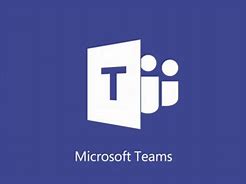We have all heard it. “This call may be monitored for quality assurance or compliance purposes.” Indeed, companies in various industries, including commodity brokerage, stocks, and investment management organizations, include compliance recording in their normal operations.
They record calls and video conferences to minimize liability, ensure the quality of customer service, and improve workforce engagement. However, meeting governmental compliance and regulatory obligations remains the most compelling reason to record.
Moving to the Cloud
Call recording technology worked well when users connected through a PBX or isolated phone system and phone calls remained the norm. But the shift away from standard phone calls to multi-media collaboration platforms like Zoom and Microsoft Teams accelerated with COVID-19.
Organizations now use these solutions as voice platforms through soft phones, VOIP and computer peripherals.
With this new class of calls and employees sharing documents, presentations, and chats, how is the compliance and monitoring keeping pace?
With respect to compliance and monitoring on-premise systems, many solutions such as Lync and Skype worked well. But with collaboration solutions moving to cloud, the ability to record from the compliance perspective becomes limited.

Integrated Voice, Video and Recording
Many systems operate with separate phone and video conferencing systems, offering little integration between the two. But more and more providers integrate voice and video in a single solution.
Microsoft provides its Teams collaboration platform with capabilities to integrate voice and call compliance recording into the solution for a unified experience.
Hence, eMazzanti though its partner, Conversant, provides fully auditable Teams conference recording for compliance and monitoring. This applies for all Teams media, including voice, video, file shares, and chats.
Teams Policy-Based Compliance Recording for Calls and Meetings
Let’s look at some of the particulars. Policy-based recording enables organizations that adopt Microsoft Teams to specify when calls and online meetings should be automatically recorded for processing and retention.
Enhanced to support the integration of third-party recording solutions like Conversant, Teams enables an end-to-end collaboration/call/recording platform.
Users of a unified platform configure, manage, record, store, and analyze communications. And, integrators access all the platform functionality, user experiences, and administrative functions needed. This includes communications platform APIs and events for recording.
Microsoft Teams provides:
- Seamless recording of calls and meetings via integrated partner solutions
- Cloud-based recording with compliant regional storage to address regulated organizations
- High-quality media capture across devices and all supported endpoints for audio, video, screen share, and chat
- Support for interaction capture between Teams users and supported calling endpoints (Teams, Teams Mobile, Skype for Business, PSTN)
- New administrative policies for compliance recording integrated with existing Teams calling and meeting tools and policies
Recording Categories Covered
Interaction recording can be divided into four categories—convenience, functional, organizational, and lawful intercept. Each of these entails different requirements for how to initiate recordings and what to record. In addition, where to store recordings, who to notify, who controls access, and how to handle retention vary by category.
Teams provides the necessary capabilities to conduct convenience and functional recording for meetings and live events, as well as for organizational recording.
Organizational recording users will be aware that their digital interactions with Teams are being recorded. But they will not be able to disable the recording and will not have access to the recording once the interaction is complete.

Meeting User Needs
The integrated Teams recording solution notifies users when recording is in progress and informs them when policy and/or recorder error is causing changes in calling behavior.
Communications admins apply and enforce recording policies to Teams users and endpoints. In addition, they configure and maintain Teams recording policies and monitor and troubleshoot recording-related issues. They also support the internal compliance officer with analytics on usage, quality, and reliability.
Compliance officers collect all Teams communications to meet compliance obligations in appropriate regional boundaries. They search for interactions based on communication-related metadata or interaction content.
Recorder Bots
Recorders are built as scalable Azure-based services (bots). They leverage Microsoft’s communications platform and register as applications. The recorder provides the direct interaction with the Teams communications platform APIs and the endpoint for media intake.
The implementation of the recorder service supports multiple recorders to achieve high availability. Geographical distribution of deployment also reduces latency from Teams to the recorder.
Visual notifications occur through Teams clients, including desktop/web, mobile, Teams phones and Teams rooms. Audio notice happens on other endpoints, such as SIP phones, Skype for Business, Audio conferencing and PSTN callers.
 Modern Compliance Recording
Modern Compliance Recording
According to Microsoft, less than 25% of recording users work in regulated organizations. Yet, recording remains critical to every aspect of the deployment. And the organizations must continue to record existing processes. Hence, integrated Teams recording provides a modern solution.
With IT challenged to balance competing pressures and existing systems often expensive to operate, the ideal integrated compliance recording solution balances affordability, compliance, security, and privacy. Business leaders look to Messaging Architects information governance experts for guidance on the best recording compliance solutions for their organization.








